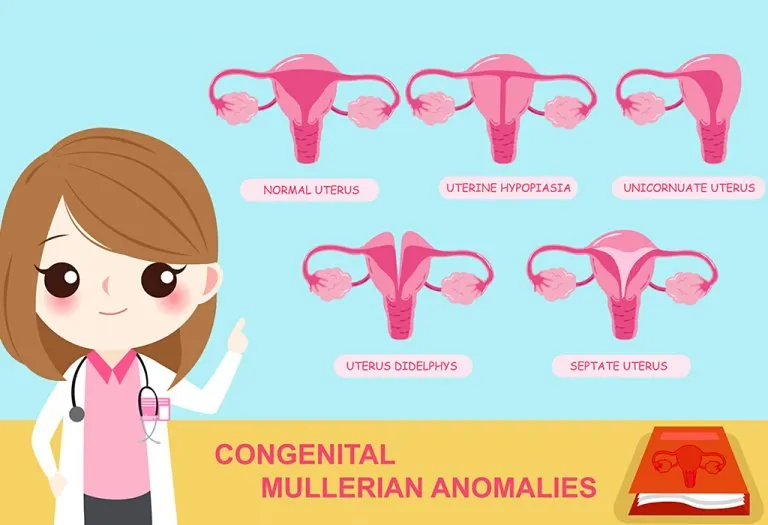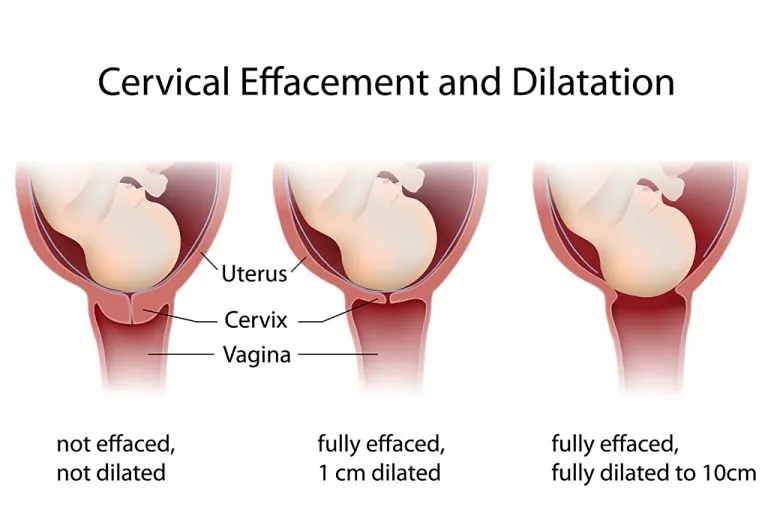Blighted Ovum (Anembryonic Pregnancy): Signs, Causes & Treatment

- What Is a Blighted Ovum?
- How Common Is a Blighted Ovum?
- What Are the Causes of Blighted Ovum?
- What Are the Symptoms of Blighted Ovum?
- Complications of Blighted Ovum
- How Is the Diagnosis of Blighted Ovum Done?
- Is It Possible to Have a Misdiagnosis?
- Tips to Avoid Blighted Ovum Misdiagnosis
- What Are the Treatments for Blighted Ovum?
- How Long Does It Take to Recover?
- How Is Anembryonic Pregnancy Miscarriage Different From a Missed Miscarriage?
- Physical and Emotional Healing After Anembryonic Pregnancy
- Questions to Ask Your Doctor
- When to See the Doctor
- Frequently Asked Questions
Miscarriages don’t occur only because of hormonal or physical problems. They can also result from a condition called blighted ovum, which is quite hard to detect in pregnant women during the first few weeks of pregnancy. A blighted ovum happens when a fertilised egg implants in the uterus but fails to develop into an embryo. This condition often leads to early pregnancy loss, even before a woman realises she is pregnant. The exact causes are not always clear, but chromosomal abnormalities are often to blame. Treatment options may include natural passing of the tissue or medical intervention. Read on to learn more about blighted ovum, its signs, causes, and treatment.
What Is a Blighted Ovum?
Here’s the blighted ovum meaning. A blighted ovum is a condition where a fertilised egg gets implanted in the uterus but does not develop into an embryo. It is also referred to as an anembryonic pregnancy because the pregnancy sac forms and grows, but the embryo does not develop. This condition causes the most number of early miscarriages. (1)
How Common Is a Blighted Ovum?
A blighted ovum occurs so early that you don’t even know you were pregnant. It accounts for about 45% to 55% of all miscarriages. 1 in 2 first trimester miscarriages is due to a blighted ovum (2).
What Are the Causes of Blighted Ovum?
The reasons for blighted ovum can’t be clearly discerned. It occurs when the early embryo stops developing, is reabsorbed and leaves an empty gestational sac. It could be due to poor quality of egg or sperm that leads to chromosomal abnormalities in the fertilised egg. A blighted ovum occurs during early pregnancy between the 8th and the 13th week. Sometimes, even before you know that you are pregnant. Hence, the blighted ovum reasons can’t be clearly determined (3).
What Are the Symptoms of Blighted Ovum?
A blighted ovum mostly occurs very early in pregnancy – before most women even realise they are pregnant. You may have the signs and symptoms of a normal pregnancy like nausea and tender breasts. But, when the embryo stops growing, and the hormone levels decrease, these pregnancy symptoms also subside. There may be abdominal cramping, light spotting or bleeding too; however, an ultrasound will show an empty sac (4).
In some cases, women continue to face signs of early pregnancy, as everything appears to be normal. The cause for this is Human Chorionic Gonadotrophin (HCG) levels which continue to rise. This type of miscarriage is diagnosed by ultrasound by the 8th week of pregnancy. It will show a large gestational sac, but no embryo.

Sometimes, the symptoms of a blighted ovum (since the woman is most likely unaware of her pregnancy) are mistaken for dysmenorrheal symptoms because of cramping and minor spotting or bleeding. It ends with the body flushing out the lining of the uterus, and you have periods which may be heavier than usual.
Complications of Blighted Ovum
While the body often resolves the condition naturally, certain complications may arise, requiring medical attention. Understanding these potential issues can help individuals better navigate their recovery and seek appropriate care (5):
- Heavy or uncontrolled bleeding.
- Development of infections.
- Uterine scarring, often resulting from a dilation and curettage (D&C) procedure.
- Uterine tears or perforation, which can occur during a D&C.
How Is the Diagnosis of Blighted Ovum Done?
Criteria for the diagnosis of a blighted ovum or anembryonic pregnancy through ultrasound are:
- Failure to identify the embryo in a gestational sac (20 mm) by transabdominal ultrasound.
- Failure to identify the embryo in a gestational sac (18 mm) by transvaginal ultrasound.
- Failure to identify a yolk sac in a gestational sac (13 mm).
- There is a possibility that the outline of the sac is irregular or incomplete.
- An abnormally low position of the gestational sac.
During a blighted ovum 6 weeks ultrasound, the gestational sac may be visible, but no embryo or fetal pole will be detected, confirming the diagnosis.
Is It Possible to Have a Misdiagnosis?
There may be a chance that there is a misdiagnosis of blighted ovum during early pregnancy. The baby usually starts developing after the 5th week and is visible in ultrasound images only after that.
Tips to Avoid Blighted Ovum Misdiagnosis
Here are some tips every pregnant woman needs to bear in mind to avoid misdiagnosis of a blighted ovum. A woman’s body can show signs that were never predicted before. Hence, it is always better to be 100% sure of the condition to take necessary actions.
- It may be a good idea to wait for the ultrasound until you are in the 7th week of your pregnancy. An ultrasound may be required earlier if there are any signs of complications.
- You can always take a second opinion to confirm the condition.
What Are the Treatments for Blighted Ovum?
In most cases, a blighted ovum needs no treatment, as the body, on recognising that the embryo is not developing, expels the tissue automatically. However, your gynaecologist will need to take a call on the course of action when the condition is detected. This may include the following (6):
- Medication – Your doctor may prescribe you Misoprostol or Cytotec, which induce a miscarriage. It can be taken orally or inserted into the vagina. You would experience bleeding within 2-3 days. Bear in mind that the medicines may also cause nausea, diarrhoea or abdominal cramps.
- Dilation and Curettage (D&C) – This is a surgical procedure to clean out the embryonic tissue. It is done using anaesthesia sometimes or under sedation mostly. The mouth of the cervix is dilated with a surgical instrument, and the tissue is removed with the help of suction, or it is scrapped out. Though there are no complications in this procedure, there might be some problems like perforation of the uterus, haemorrhage or Asherman syndrome.
- Natural Expulsion of Tissue – You can wait for the miscarriage to happen naturally, but that may also increase your anxiety. Also, there are chances that even after waiting, due to retained products, you may need medical intervention. Natural expulsion may take up to two weeks. The only benefit of waiting is that there are no chances of complications arising from surgery or medicines.
How Long Does It Take to Recover?
The recovery time from a blighted ovum varies for each individual, depending on physical and emotional factors. Physically, the body may take a few days to several weeks to recover, especially if a dilation and curettage (D&C) procedure is performed. Bleeding and cramping typically subside within 1-2 weeks, but it may take a few weeks for hormonal levels to return to normal. Emotionally, recovery can take longer, as the experience of pregnancy loss can be deeply impactful. Support from loved ones, counselling, or therapy can help in coping with the emotional aspects. Most women are advised to wait until they feel physically and emotionally ready before trying to conceive again, often after at least one normal menstrual cycle. Always consult a healthcare provider for personalised guidance.
How Is Anembryonic Pregnancy Miscarriage Different From a Missed Miscarriage?
In an anembryonic pregnancy or blighted ovum pregnancy, the sac develops, however, there is no foetus inside. This is only detected through an ultrasound. It could mean one of the two things – that the embryo was conceived but either it did not develop or was absorbed in the uterus at the initial stage. In most cases, pregnant women undergo a natural miscarriage at home where no embryo is expelled as it has either been absorbed or didn’t develop. The pregnancy tissue, however, appears as thick clots. Sometimes, the mother might be advised to undergo a procedure if, waiting for a natural miscarriage to expel the tissue is risky.
While in an anembryonic pregnancy an embryo is not formed, in a missed miscarriage, the foetus dies during early pregnancy. A missed miscarriage is also known as a silent miscarriage, as the body fails to detect the demise of the foetus and continues to produce pregnancy hormones. The placenta is intact, and the symptoms of pregnancy usually persist. The miscarriage is usually detected by the absence of a foetal heartbeat during an ultrasound. In this case, the embryo can be expelled naturally or via a procedure based on the doctor’s recommendation.

Physical and Emotional Healing After Anembryonic Pregnancy
Physical healing after a miscarriage is different for every woman. Healing could vary depending on if the miscarriage happened naturally, or through a D&C, and how far along were you in the pregnancy.
A woman healing after an anembryonic miscarriage would experience heavy bleeding and also cramping. She can continue taking her prenatal vitamins, but abstain from sex, douching, and using tampons for at least one month.
Emotional healing from a pregnancy loss can be very difficult, and with a blighted ovum, it is especially important for the woman to realise that she has all the right to acknowledge her loss.
Because the body goes through another set of physical, mental and hormonal changes after the miscarriage, she may experience mood swings. Thus, focussing on positive thoughts and doing things that make her happy is much required.
Questions to Ask Your Doctor
It’s completely normal to have questions and feel a range of emotions during this time, so don’t hesitate to seek clarity from your healthcare provider. Some questions you might consider asking include:
- Is it safe to let my body miscarry naturally, or should I consider medication to help the process?
- When is it appropriate to start trying to conceive again?
- Are there any risks associated with a dilation and curettage (D&C) procedure?
- How long will I experience bleeding or cramping after the miscarriage?
- Could this happen again in future pregnancies, and are there any warning signs?
- Is a D&C necessary in my case, or are there other options?
- Should I schedule a follow-up ultrasound or additional appointments?
- What are the potential risks or complications of a miscarriage?
When to See the Doctor
Contact your healthcare provider immediately if you experience any of the following symptoms. These signs could indicate complications that require prompt medical attention:
- Severe or persistent pain that does not improve with pain medication.
- A fever that persists and does not subside.
- Heavy or excessive vaginal bleeding.
- Dizziness, lightheadedness, or fainting.
- Symptoms that worsen or intensify over time.
Frequently Asked Questions
Here are a few frequently asked questions about anembryonic pregnancy:
1. Will it affect the chances of having another baby?
Blighted ovum does not affect the chances of having another baby. As per statistics, women who have had a miscarriage have a high rate of success in their next pregnancy.
2. When can you be pregnant after anembryonic pregnancy?
Doctors will recommend trying again after you have had your first period after the miscarriage. It is quite natural that women are anxious after the miscarriage, but they will have to wait at least until they get the next period.
3. Should you go with D&C or wait for a natural miscarriage?
A woman can choose to go with D&C or wait for a natural miscarriage. Gynaecologists do not recommend a D&C for early pregnancy. However, it could be beneficial if you plan to get the tissues examined in a pathology laboratory to determine the reason for the miscarriage, especially if it is recurrent.
4. How to prevent a blighted ovum?
Unfortunately, nothing can be done to prevent a blighted ovum. When it occurs, the gestational sac and accumulated tissues should be pushed out by the end of the 1st trimester.
5. Would a blighted ovum occur again?
It cant be said that a blighted ovum can’t occur again in the same woman. There are instances of recurrences in the condition.
A miscarriage is emotionally draining for any woman, more so in the case of a blighted ovum. Talking about the loss and seeking emotional support from friends and family can go a long way in helping them.
References/Resources:
1. Women’s and Children’s Health Network – Blighted Ovum
2. American Pregnancy Association – Blighted Ovum
3. Mayo Clinic – Blighted ovum: What causes it?
4. Pregnancy, Birth & Baby – Blighted ovum (anembryonic pregnancy)
5. Cleveland Clinic – Blighted Ovum
6. National Library of Medicine – Anembryonic Pregnancy
Also Read:
Fertilization
Placental Insufficiency
Follicular Study and Monitoring
Chances of Conceiving After an Abortion
Was This Article Helpful?
Parenting is a huge responsibility, for you as a caregiver, but also for us as a parenting content platform. We understand that and take our responsibility of creating credible content seriously. FirstCry Parenting articles are written and published only after extensive research using factually sound references to deliver quality content that is accurate, validated by experts, and completely reliable. To understand how we go about creating content that is credible, read our editorial policy here.
























